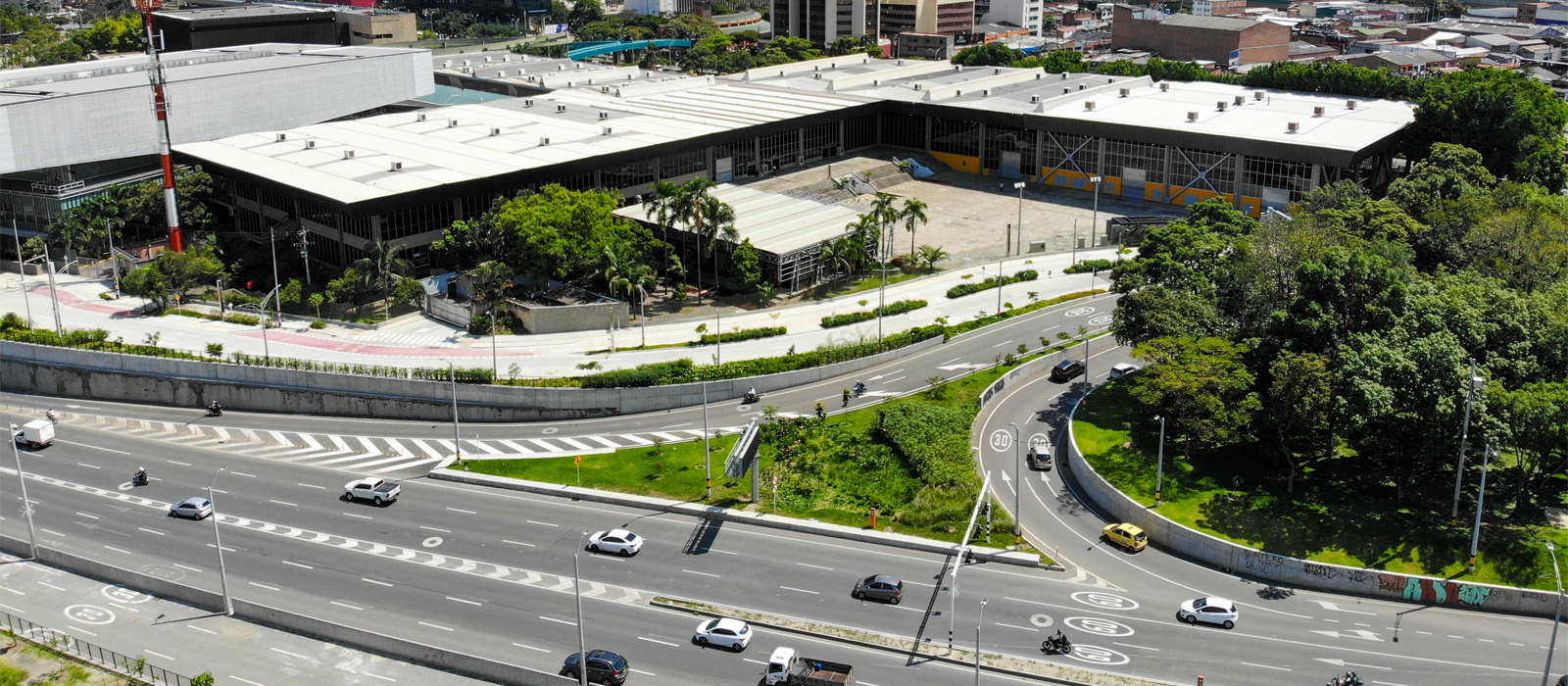Colombia-MICE is part of the Pelecanus Travel Group. We are located in Bogota, Colombia. We are specialized in corporate travel and all services around Meetings, Incentives, Conferences, and Exhibitions.
Content
Taxi services in Colombia
Colombia has an extensive taxi system with regulated tariffs and individual use.
In all taxis, you should find a form showing the prices of the routes. Some regions use a taximeter, others don’t. Sometimes surcharges apply, sometimes not. In Bogota and Medellin, taxi companies meet the requirements.
In other regions, however, my personal advice is: always find out about the approximate fare before you set off!
Apps:
- EasyTaxi
- Taxi Libres
- Tappsi
Taxi company:
- Bogota: Taxis Libres, TaxExpress, Cooperativa Teletaxi, Taxis Verdes
- Medellín: Taxsuper, Coopeombas, Taxis Medellín
- Cali: Tax Feribo, Taxis Zone, Taxisday, Taxis Valcali, Taxis del Valle
- Cartagena: Cooprotax, Radio Taxi Cartagena, Cartagena Airport Taxis
- Santa Marta: Hey Taxi Santa Marta, Taxi Santa Marta SAS
- Barranquilla: Rtaxi, Taxi Prado, Radio Taxi Modelo
- Manizales : Taxi Amigo Manizales, Taxis Flota El Ruiz, Taxi Seguro Fast
- Bucaramanga: Radio Taxi Bucaramanga, Radio Taxis Libres SAS, Radio Tax
Parameters and tariffs to consider in Bogotá:
- Minimum fare: 4,500 Colombian pesos (COP)
- Value per unit: 90 Colombian pesos (COP) (every 100 meters or every 24 seconds waiting time)
- Surcharge to and from the airport: from $4,500* Colombian Pesos (COP)
- Night supplement, Sunday and public holiday supplement: from 2,200* Colombian pesos (COP)
- Surcharge for door-to-door service: 800 Colombian pesos (COP)
I live in Colombia and I sometimes hail a taxi from the street. However, I advise all foreign visitors to order taxis with an app or have them ordered in the hotel or restaurant.
Private transportation in Colombia
In recent years, all kinds of digital platforms for individual transport have been introduced in Colombia. Traveling by car and using these applications is the most common means of transport for the country’s middle class, although much time is lost due to heavy traffic in the country’s major cities.
This is a very good option as you know the cost of the ride before you go, plan it according to your schedule and contact the driver directly if needed. It should be noted that the tariffs for these services may vary depending on the number of travelers, the type of vehicle, the time of day, traffic and sometimes the weather.
However, my personal experience is that these drivers do not always find the destination or the passenger right away.
Above
- UberYa: 4 people maximum, instant service
- Uber Planet: Reduce your carbon footprint
- Comfort: Better vehicles for more comfort
- UberXL: Spacious vehicles for up to 7 people
Beat
- Lite: Economy service where the vehicles are basic
- Beat: Immediate standard service
- Plus: Better and more spacious vehicles
Cabify
- Cabify: Instant service (value may vary based on time, distance and incidentals)
- Cabify Corp: An executive option where reservations for these services must be made 48 hours in advance and cancellations starting 4 hours before the service will be charged. In addition, the terms of payment must be determined in advance. The vehicles are more modern.
InDriver
It is an application where the user can choose the fare and negotiate with the drivers to find the ideal driver. Here you can see the driver’s rating and vehicle type before ordering a ride.
didi
A budget option for private transportation, with the option of instant service or a taxi.
Picap
It is an alternative to private service, that is, to travel by motorbike. You enter your starting point, then the destination, then you can see the estimated price of your trip, you accept the service, you get the complete information from your driver and that’s it.
Rental car in Colombia
The car rental business in Colombia is going from strength to strength. According to the Agremiación para electrical alquiler de vehículos (Asorenting) there are more than 40,000 vehicles of all types for hire in the country, including light, commercial and heavy vehicles.
Generally, drivers must have a credit card with sufficient funds to cover the deposit required by each company, a valid driver’s license, and an ID card or passport to obtain this service.
Several companies offer this service and their prices vary depending on vehicle type, length of rental and other factors.
We recommend making the reservation via the Internet, as it is not only easy and fast but also gives the opportunity to see all the vehicles on offer and to choose the location where you can pick up your vehicle in the easiest way. It’s also important that you check the condition of the vehicle upon delivery and if you can make a video of it that’s even better. According to some reports, there are many inconveniences when returning the vehicles when they show damage, which is usually not caused by the current renter, but for which he is still held responsible.
Depending on the company and vehicle type, the fare can range from $35 to $120.
Among the most recognized car rental companies you can find:
- Bogotá: Autovermietung Kolumbien, Rentcars, Kayak, Alamo, Budget, Expedia, Avis, Alquilercarrosenbogota.co, Alkilautos, Budget.
- Medellin: Medellin and Envigado Car Rental Alkiautos, Jet Rent a Car Medellin, Rentarte, Rent A Car
- Cali: Rentautos 24/7, CEO Renting, RentalCars, Farallones Rent Car, Alkiautos, Alamo
- Cartagena: Executive Rent a Car, Evolution Rent a Car, Alkiautos, S&M Rent a Car, Autorental del Caribe, AVS del Caribe
- Santa Marta: Express Car, Locate Rent a Car, Alamo, Nationale Autovermietung
- Barranquilla: Alkiautos, Premium Rent a Car, Autorental del Caribe, AVS del Caribe
- Manizales: Movirents Colombia, Locate, Casa Lopez, About Wheels, Nisagi
- Bucaramanga: Alkiautos, Localiza, Rentacar Geiscar, Rentiautos
Take a look! https://youtu.be/sGrQOllDLhY
Private transportation services in Colombia
There are all types of private transport companies in Colombia where you can book everything from legal white cars to luxury vans. The transfer options can be both within the same city and to the surrounding areas, in addition to certain companies offering ground service from one city to another.
Prices range from $14 to $150 depending on the company, destination and vehicle type.
The most popular companies are:
- jelpit
- Colviajes
- Transportes Ejecutivos
- integra
- Conquistador Private Transport
- Cooperative Multiaktiva De Transportadores Coomtranscol
- Dhuchi Business Group
- Agile cargo
- Transurbio
- Edward Botero
- Corporate transport Bogotá
- estarter
- aerosur
- Benz driver
Public transport in Colombia
The main cities of Colombia have their own public transport system, which runs on the main lines of each city. This option is the cheapest and is generally preferred by the country’s middle class, as well as lower class and students.
SITP and Transmilenio – Bogotá
Bogotá’s transportation system is the largest in Colombia. It handles around 12.2 million trips a day. Also, due to the heavy daily private traffic in the city, this option is several times faster than a car.
the Transmilenio (TM) is Bogotá’s mass transit system and has grown into the country’s best-known and most extensive rapid transit system, operating along the city’s major highways. The TM also includes the Integrated Public Transport Service of Bogotá (SITP), which are smaller blue buses that circulate around the city’s neighborhoods and main streets.
For 2022, the tariff is 2,650 Colombian pesos (COP). We, therefore, recommend that you plan your trip in advance in order to load your card with the necessary credit.
The Transmilenio service can be used from El Dorado Airport. The M86 bus runs along with Avenida El Dorado and then on Carrera 7 to the north.
Access to Transmilenio or SITP is via contactless smart cards purchased and topped up at Tu Llave counters or via the transport system’s website or app.
There are currently several types of cards:
- Tu Llave Plus Card: Can be loaded in Colombian Pesos (COP) to pay for fares. They are personalized with the user’s personal data, allow credit recovery in the event of loss and offer discounts for transfers within the same system.
- Tu Llave Básica card: also allows top-ups in Colombian pesos (COP) for the payment of fares and allows discounts for transfers within the SITP. However, it is not customizable and therefore does not provide a way to restore funds in the event of a loss.
Integrated mass transit system of Medellín
In the city of eternal spring, the most famous form of public transport is the Medellín Metro.
The Medellín Metro has 2 lines with 25 stations in the city. Their lines cover an area from Bello with one stop to Sabaneta and one stop to La Estrella. The longest line of the metro is line A, which starts in La Estrella (Sabaneta) and ends in Niquía (Bello), a route that is 25 km long and has 21 stations. The shortest line, on the other hand, is line B, which starts in San Javier (Medellín) and ends in San Antonio (Medellín), a route of 6 km with 7 stops.
The estimated price of the metro ranges from 2,580 to 4,215 Colombian pesos (COP), the value depends on the integration of the passenger. That is, whether you only take the subway or whether you decide to use other services such as tram, gondola, bus or feeder. The fare also depends on the chosen route.
The operating hours of this system are Monday to Saturday from 4:30 a.m. to 11:00 p.m. and Sundays and public holidays from 5:00 a.m. to 10:00 p.m. depending on the line.
Western Integrated Mass Transit System (MIO) – Cali
Over the past 10 years, the city has redesigned and updated its integrated transportation system.
In 2009 the Masivo Integrado de Occidente (MIO), a system that transports between 400,000 and 500,000 passengers daily within the city.
Easily recognizable by its blue color, the MIO, as Cali residents call it, has 91 lines with 1773 stops that run throughout the city and even neighboring communities such as Candelaria, Palmira, Puerto Tejada, and Santiago de Cali achieve Yumbo. The longest MIO line is the T31, which starts in Universidades in the city of Cali and ends in the municipality of Palmira; it is 18 km long and has 30 stops. The shortest line is the A32, a route in the municipality of Palmira, with a length of 1 km and 2 stops.
The MIO works with a contactless smart card that must be purchased at one of the ticket offices and loaded with the corresponding fare of 2,200 Colombian Pesos (COP) in order to use the service.
There are 2 types of cards:
- Personalized Card: With a value of 3,500 Colombian Pesos (COP), which can be loaded with any value and can be used every time you want to use the service.
- Ticket: This ticket must be handed in at the entrance. Since more than one bus is used on almost all routes, often outside of train stations, the ticket must be validated by swiping the card again. With a single ticket it is not possible to change from one bus to another without paying another fare.
The offer is completed by 5 feeder lines, distributed in different parts of the city and recognizable as green buses, and by the MIO CABLE cable car line, which goes from the Brisas De Mayo station to the Cañaveralejo terminal.
It has 4 stops and hours of operation are 5:00am to 9:26pm Monday to Saturday and 6:00am to 7:53pm on Sundays.
The integrated transit system Transcaribe – Cartagena
Transcaribe is based on the concept of a “trunk-feeder” system. In the main districts, this system consists of feeder lines with medium and small capacity buses, which take users to interchange terminals, where they transfer to the main routes, with physical, operational and fare integration, to be brought to their destinations by high capacity buses, articulated by main traffic corridors with exclusive or preferred lanes.
In the Cartagena district, the integrated transport system also takes into account the possible integration with maritime transport.
The infrastructure of the integrated transport system consists of a series of road corridors, interchange terminals, stops and all street furniture for public transport.
The tariffs for the collective public transport of buses, buses and microbuses are the following:
- Basic Service Buses: $2,600.
- Basic Service Microbuses: $2,500.
SETP Strategic Public Transportation System – Santa Marta
Santa Marta’s strategic public transportation system consists of a series of blue buses and minibusses that operate on the city’s main thoroughfares. It is identified as STU and has 15 lines with 164 stops.
Their routes range from north of Santa Marta at the Carrera 3, 62-644 stop to south of Cienagón at the I-90, 5 stop. The westernmost stop is Airport 1-99 and the easternmost stop is Unnamed Road.
The fare for this system is currently 2,000 Colombian Pesos (COP) on normal days and 2,050 Colombian Pesos (COP) on holidays when paying in cash.
Public Transportation System – Barranquilla
Barranquilla does not currently have an official public transport system, but it is scheduled to be introduced in the second quarter of 2022.
Nevertheless, Operador Uno is the leading organization in this sector. It has a very efficient integrated service that covers 75% of the urban area with more than 3,000 buses and minibusses spread over 89 legal routes.
The fare is 2,400 Colombian pesos (COP) on normal days and 2,500 Colombian pesos (COP) on Sundays and public holidays.
Integrated local transport system Metrolínea – Bucaramanga
Bucaramanga, the beautiful city of Colombia, has a transportation system called Metrolínea, which is distinguished by its apple green color, carries 245,000 passengers daily and has 2 lines in Bucaramanga with 9 stops in the city. The routes run from Quebradaseca station to Campoalegre station and vice versa.
To use the service, you need to buy a card at the train stations. The card is placed on a reader at the entrance and the user enters the system. The Metrolínea card costs 3,000 Colombian pesos (COP) and is loaded with the value of the fare, which is 2,550 Colombian pesos (COP). It can be recharged at stations or points of sale throughout the city.
Colombia offers various travel options within this amazing country that the visitor can choose according to their budget and itinerary. We hope this information is useful for your next visit. If you need advice to organize your trip, contact us, we will be happy to help you.



